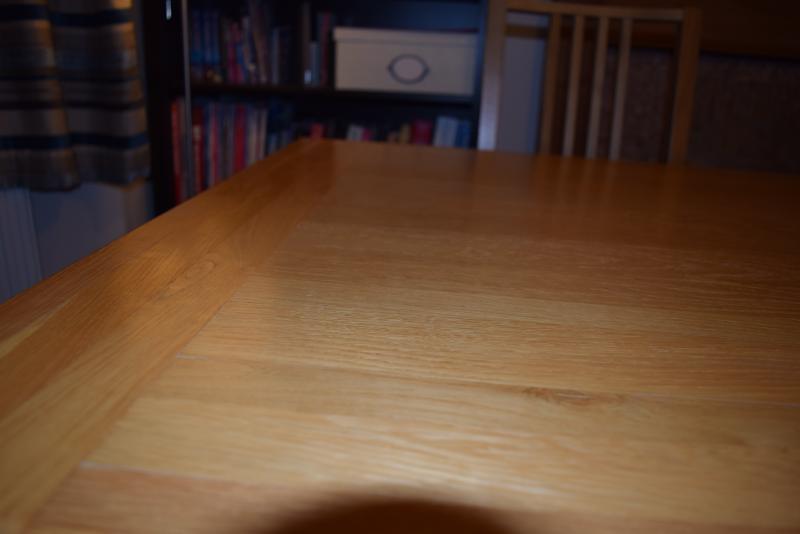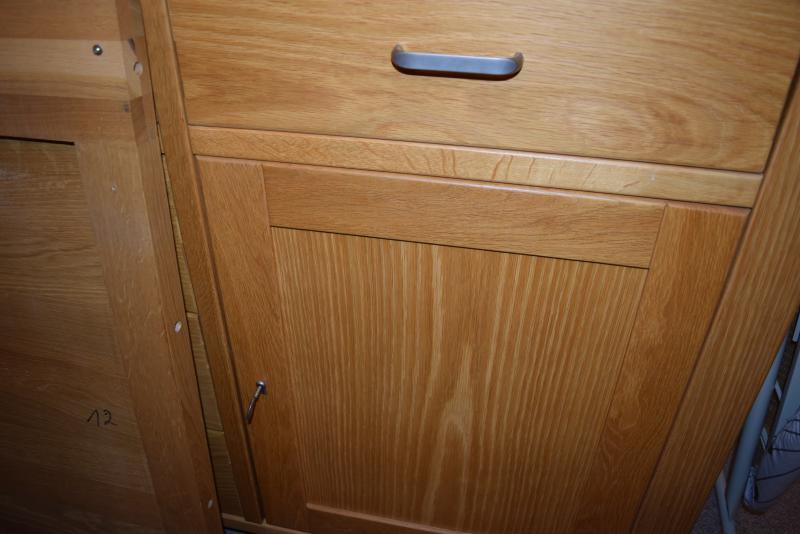Hi all
I recently bought a dining table and a sideboard on ebay. It was a bit of an impulse buy: we couldn't really afford to go for new stuff but we needed the furniture, and the pics looked good. I figured that if I had any problems with it I could just sand it down and refinish anyway, so we bought it.
On picking it up, I realised immediately that I would need to do work on it. The finish on the furniture as it stands is quite orangey. I attach some pictures- if anybody can tell me what sort of finish this is, I'd really appreciate it:
I was looking for a far more natural, lighter colour. No problem, I thought: strip it, sand it, and finish it.
However, I had a proper look at the furniture today and I think I've got a problem. The table is OK, but quite a bit of the sideboard seems to be panels of very thin oak veneer. The top, legs, and drawer fronts are all solid wood as are the drawer sides and backs, but the back and sides of the unit (as well as the drawer bases and shelves) are veneer. I think the substrate is mdf. I think the door fronts might be veneer too - is it possible to tell from the picture I posted?
So my question is:
Is it possible to remove this finish from very thin veneer? my concern is that I will have to sand it at some point to get rid of the current finish and I'll end up sanding through the veneer. The veneer is in quite poor condition in places too - you can feel it lifting and splitting.
I recently bought a dining table and a sideboard on ebay. It was a bit of an impulse buy: we couldn't really afford to go for new stuff but we needed the furniture, and the pics looked good. I figured that if I had any problems with it I could just sand it down and refinish anyway, so we bought it.
On picking it up, I realised immediately that I would need to do work on it. The finish on the furniture as it stands is quite orangey. I attach some pictures- if anybody can tell me what sort of finish this is, I'd really appreciate it:
I was looking for a far more natural, lighter colour. No problem, I thought: strip it, sand it, and finish it.
However, I had a proper look at the furniture today and I think I've got a problem. The table is OK, but quite a bit of the sideboard seems to be panels of very thin oak veneer. The top, legs, and drawer fronts are all solid wood as are the drawer sides and backs, but the back and sides of the unit (as well as the drawer bases and shelves) are veneer. I think the substrate is mdf. I think the door fronts might be veneer too - is it possible to tell from the picture I posted?
So my question is:
Is it possible to remove this finish from very thin veneer? my concern is that I will have to sand it at some point to get rid of the current finish and I'll end up sanding through the veneer. The veneer is in quite poor condition in places too - you can feel it lifting and splitting.



